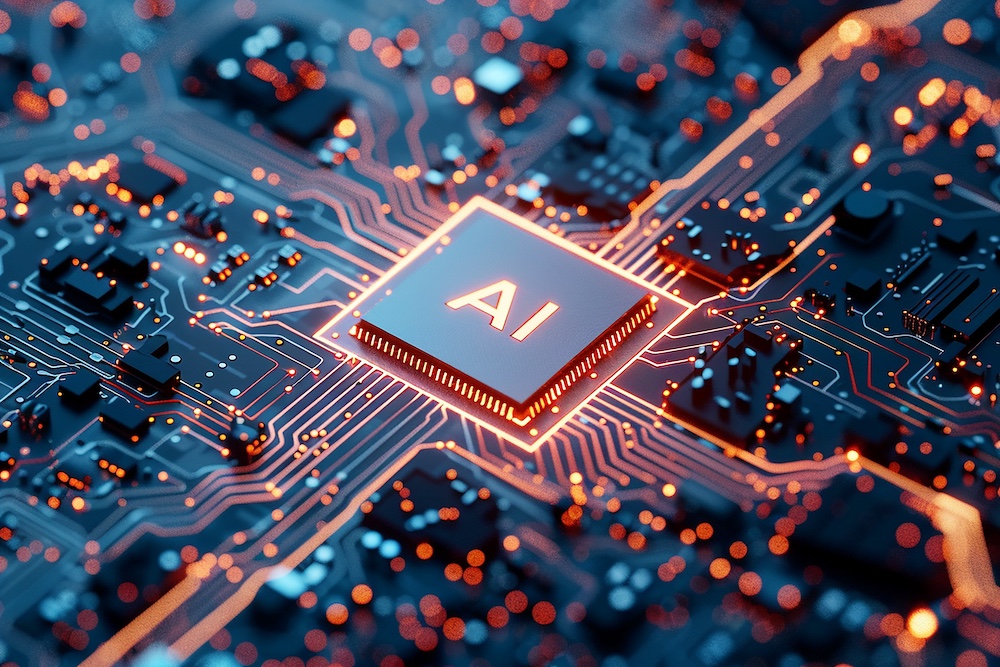As the manufacturing industry navigates the complexities of the digital age, artificial intelligence (AI) emerges as a vital catalyst in the digital transformation journey. By combining the power of AI and digital transformation, manufacturers can unlock unprecedented levels of efficiency and innovation, further enhancing their competitive edge in the market. However, while there are obvious benefits to AI and digital transformation, actually implementing these new tools and adjusting processes requires significant organizational buy-in.
Here’s how you get started with AI and digital transformation.
Why You Need AI and Digital Transformation
Leveraging the possibilities of AI and digital transformation provides organizations with numerous benefits.

Create Innovative Products
AI and digital transformation empower manufacturers to develop innovative products—and it all starts with harnessing the right data. AI-driven analytics can provide insights from vast amounts of data to help steer product design. In addition, advanced generative tools support iterative design processes and rapid prototyping with real-time simulation, significantly reducing the time and cost associated with traditional methods.
Manufacturers can optimize product performance and lifecycle management by using AI in combination with other digital transformation technologies, such as digital twins and IoT integration. This synergy accelerates innovation and ensures that products meet the highest standards of quality and functionality, ultimately driving customer satisfaction and business growth.
Using AI and digital transformation makes it possible to iterate on designs based on data-backed decisions to create innovative products that meet customer needs.
Make Data-Driven Decisions
AI and digital transformation enable manufacturers to find hidden value in the data already being generated every day. By leveraging AI algorithms, companies can analyze large datasets to uncover patterns that were previously inaccessible. This analytical power means organizations can now generate insights from the real-time monitoring of production processes, enabling quick adjustments to optimize performance and reduce downtime.
This new analytical power also means predicting maintenance needs throughout manufacturing, preventing costly equipment failures through proactive interventions. Beyond production, decision-makers can use data insights to fine-tune supply chain management and effectively allocate resources.
Integrating AI in digital transformation initiatives transforms raw data into actionable intelligence, driving informed decisions that boost productivity and profitability.
Increase Profitability
The increased efficiencies powered by data-driven decision-making and the creation of innovative products come together to increase profitability throughout the entire organization. Automating manual and time-consuming tasks frees up human resources to focus on high-level aspects of product development while reducing resource strain. The amount of time and resources previously needed to complete tasks is significantly reduced, resulting in shorter product timelines and increased profit margins.
How to Integrate AI and Digital Transformation
Identify Implementation Opportunities
Successfully integrating AI into your digital transformation strategy begins with identifying key opportunities for AI implementation. Start by assessing your current processes to pinpoint areas where AI can add the most value. Look for tasks that are repetitive, time-consuming, or prone to human error—these are prime candidates for AI-driven automation. Next, examine your data management practices to see where AI analytics could enhance decision-making and operational efficiency.
By carefully identifying and evaluating AI implementation opportunities, you can create a targeted approach that maximizes the benefits of AI and digital transformation.

Invest in the Right Solutions
Investing in the right technologies is crucial for the successful integration of AI into your digital transformation strategy. Begin by identifying the specific AI tools and platforms that align with your identified opportunities and business goals. Look for technologies that offer scalability and flexibility to grow with your organization’s evolving needs. Also, be sure to note which organizations prioritize AI in their product strategies. Investing in these tools will keep you on the cutting edge of AI and digital transformation investment.
By making informed investments in the right technologies, you can set a strong foundation for AI and digital transformation, driving long-term success and innovation in your manufacturing processes.
The Future of AI and Digital Transformation
The future of AI and digital transformation in manufacturing promises to revolutionize how industries operate and compete. As AI technologies advance, their integration with digital transformation will become even more seamless and powerful. Emerging trends such as the Internet of Things (IoT), edge computing, and advanced machine learning models will further enhance AI’s capabilities in manufacturing processes.
We can expect AI to drive greater automation, allowing organizations to operate with unprecedented agility. Ultimately, AI will play a crucial role in fostering innovation, enabling manufacturers to develop and deliver products that stay one step ahead of ever-changing consumer needs.
